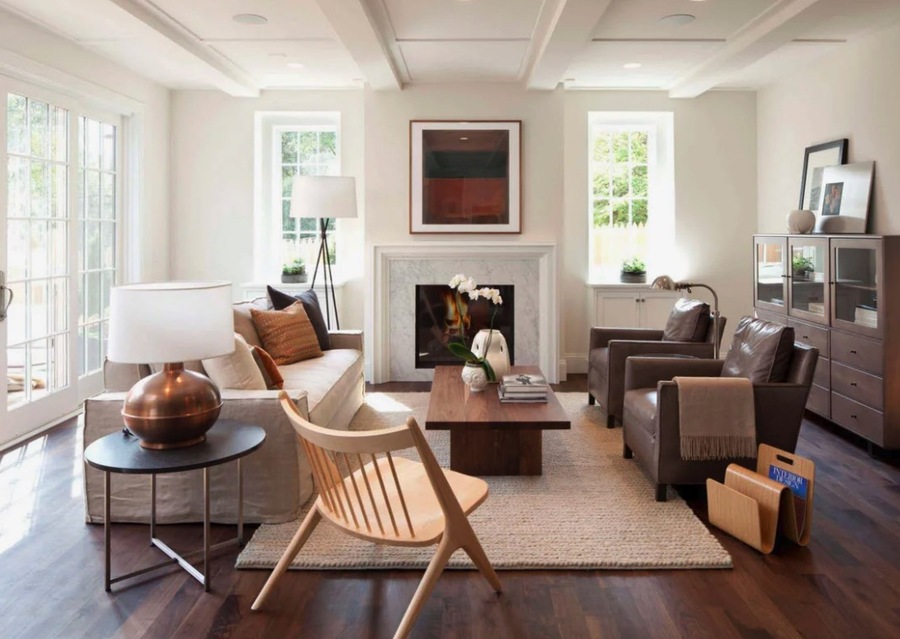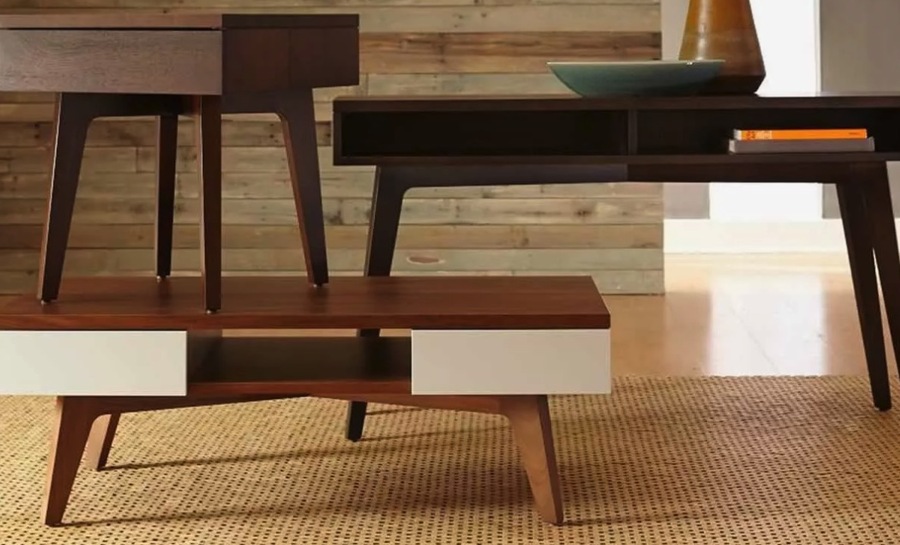The Timeless Elegance of Wooden Furniture

Furniture, an important element of home interiors, serves both functional and aesthetic purposes. Broadly speaking, furniture includes movable objects designed to support various human activities such as sitting, eating and sleeping, and to hold objects at a convenient height for working or storing. Among the various materials used to create furniture, wood has retained a special status due to its durability, versatility and natural beauty. Wooden furniture not only meets practical needs, but also adds warmth and elegance to any space, making it a timeless choice for homeowners around the world. For those looking for customized solutions in Dubai, Vigilant Design & Renovation offers high quality custom made wooden furniture to suit individual requirements.
History of Wooden Furniture: From Ancient Times to the Present
The history of wooden furniture dates back to ancient civilizations, with evidence of crafted wooden pieces found in Egyptian tombs from as early as 3000 BC. These early pieces were often ornately decorated and used by the elite for practical purposes and to showcase wealth and status. In ancient Greece and Rome, wooden furniture became more widespread, with designs emphasizing both functionality and artistic elements. For example, the Greeks developed the klismos chair, renowned for its elegant curves and ergonomic design, which remains influential in modern furniture design.
During the Middle Ages, furniture construction became more robust, incorporating Gothic motifs. The Renaissance period saw a resurgence of classical design principles, with wooden furniture becoming more elaborate and intricately carved. The 17th and 18th centuries brought about the Baroque and Rococo styles, characterized by opulent designs and extensive use of fine woods like walnut, oak, and mahogany. These styles were marked by their grandeur and complexity, often featuring intricate inlays, gilded details, and elaborate carvings.
The Industrial Revolution in the 19th century revolutionized furniture making, introducing mass production techniques and making wooden furniture more accessible to the general public. The 20th century saw the rise of modernism, which favored simplicity, functionality, and new materials, but wood remained a staple due to its timeless appeal. Mid-century modern designs, spearheaded by designers like Charles and Ray Eames, celebrated the natural beauty of wood while incorporating sleek, minimalist aesthetics that continue to influence contemporary furniture design.
Examples of Home Furniture
– Dining Tables and Chairs: Wooden dining sets are a classic example of home furniture, combining durability with aesthetic appeal. Tables made from oak, walnut, or cherry wood offer robust surfaces for dining and can be intricately carved or sleek and modern in design. These tables often become the centerpiece of the dining room, bringing families and friends together for meals and gatherings.
– Beds and Bedframes: Wooden beds, such as those made from pine, maple, or teak, provide sturdy support and can range from minimalist styles to ornate, hand-carved designs. A well-crafted wooden bedframe can last for decades, providing a stable foundation for a good night’s sleep and adding a touch of natural beauty to the bedroom.
– Cabinets and Storage Units: These pieces are essential for organization and storage. Crafted from woods like mahogany or birch, cabinets and wardrobes offer both functionality and elegance. They can be designed with intricate details, like carved panels and decorative hardware, or kept simple and modern to suit various interior styles.
– Sofas and Coffee Tables: Living room furniture, including wooden sofas with upholstered cushions and coffee tables made from hardwood, blend comfort with style. Wooden frames provide a sturdy base for upholstered seating, while coffee tables made from materials like reclaimed wood add character and charm to the living space.
Modern Materials for Furniture Making
While wood remains a popular choice, modern furniture making also utilizes a variety of other materials:
– Metal: Often used for frames and accents, metal adds strength and a modern aesthetic to furniture. It is commonly used in combination with wood to create industrial-style pieces that are both durable and stylish. For example, a wooden dining table with metal legs can offer a contemporary look while maintaining the warmth of natural wood.
– Plastic: Versatile and lightweight, plastic is used in various furniture designs, especially for outdoor and contemporary pieces. Advanced manufacturing techniques allow for the creation of plastic furniture that is both durable and visually appealing. Plastic chairs and tables, available in a wide range of colors and styles, are often chosen for their ease of maintenance and affordability.
– Glass: Frequently used for tabletops and decorative elements, glass adds a sleek and elegant touch. When paired with wooden frames, glass can create a striking contrast that enhances the overall design of the furniture. For instance, a wooden coffee table with a glass top can offer a sophisticated look that fits well in modern interiors.
– Fabric and Leather: Commonly used for upholstery, these materials enhance comfort and aesthetic appeal. Upholstered wooden furniture, such as sofas and chairs, combines the natural beauty of wood with the softness and texture of fabric or leather, providing both style and comfort.
Advantages of Wooden Furniture
- Durability: Wooden furniture is long-lasting and can withstand heavy use. With proper care, pieces can last for generations. Unlike furniture made from synthetic materials, wood ages gracefully and can even develop a desirable patina over time. Solid wood furniture can also be refinished and repaired, extending its lifespan and maintaining its beauty.
- Aesthetic Appeal: The natural grain and color variations in wood make each piece unique, adding warmth and beauty to any space. Wood’s inherent texture and character cannot be replicated by synthetic materials, making wooden furniture a distinctive addition to any room. Whether finished with a clear varnish to highlight the grain or painted for a different look, wooden furniture can suit a wide range of interior styles.
- Versatility: Wood can be carved, stained, painted, or left natural, making it suitable for a wide range of styles and functions. From rustic farmhouse tables to sleek, modern shelving units, wooden furniture can be crafted to match any design aesthetic. The versatility of wood allows for endless customization options, ensuring that each piece can be tailored to meet specific design preferences.
- Eco-Friendly: Wood is a renewable resource. When sourced sustainably, wooden furniture is an environmentally friendly choice. Sustainable forestry practices ensure that trees are harvested responsibly and that new trees are planted to replace those that are cut down. Additionally, wooden furniture is biodegradable and has a lower environmental impact compared to furniture made from non-renewable materials like plastic or metal.
- Value: High-quality wooden furniture retains its value over time and can even become more desirable with age. Antique wooden pieces, in particular, can appreciate in value and become cherished heirlooms passed down through generations. Investing in well-made wooden furniture is a long-term investment that offers both practical and financial benefits.
Renowned Wooden Furniture Designers
Several designers have gained international acclaim for their work with wooden furniture:
– George Nakashima: Known for his handcrafted pieces that celebrate the natural beauty of wood, Nakashima’s work is characterized by its organic forms and meticulous craftsmanship. He often used live-edge wood slabs, preserving the natural edges of the wood to create unique, sculptural pieces that highlight the inherent beauty of the material.
– Hans Wegner: A leading figure in Danish modern design, Wegner created iconic wooden chairs that blend simplicity with ergonomic excellence. His designs, such as the Wishbone Chair and the Shell Chair, are celebrated for their clean lines, comfortable forms, and expert craftsmanship. Wegner’s work has had a lasting influence on modern furniture design, emphasizing the importance of functionality and aesthetic appeal.
– Sam Maloof: An American woodworker, Maloof is celebrated for his smooth, sculptural rocking chairs and innovative joinery techniques. His furniture is renowned for its elegant curves, comfort, and meticulous attention to detail. Maloof’s pieces are considered works of art and have been exhibited in museums and galleries around the world.
– Eileen Gray: Although she worked with various materials, Gray’s wooden furniture designs are notable for their modernist aesthetic and functional elegance. Her pieces, such as the E-1027 table and the Bibendum Chair, combine sleek lines with practical functionality, reflecting her innovative approach to design.
For those looking for eco-friendly and durable natural wood furniture in Dubai, Vigilant Design & Renovation offers custom made wooden furniture. This company stands out for its commitment to quality and sustainability, ensuring that every product is not only beautiful, but also durable. When you choose Vigilant Design & Renovation, you are investing in furniture that will enhance your living space with natural charm and exceptional craftsmanship.
Basketball fan, dreamer, hiphop head, Mad Men fan and identity designer. Operating at the intersection of simplicity and programing to create not just a logo, but a feeling. I prefer clear logic to decoration.


